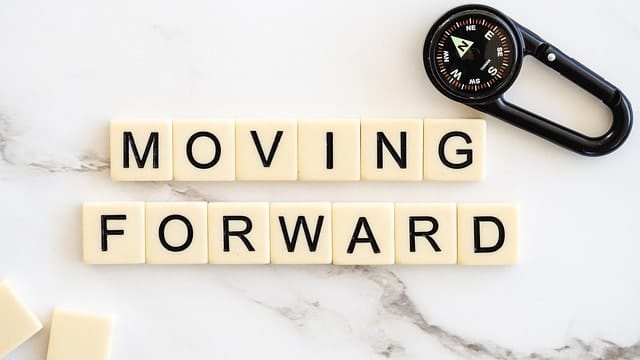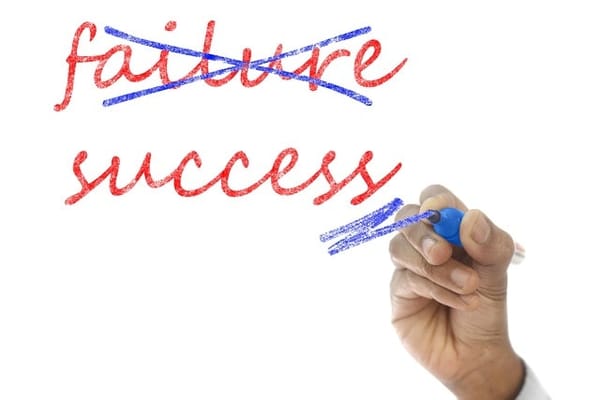Failing forward means using failures as opportunities for growth. This article shows how setbacks can lead to success. You’ll find practical strategies and real-life examples to help you turn failures into valuable lessons.
Key Takeaways
- Failing forward is a transformative mindset that turns setbacks into vital learning opportunities, fostering personal and professional growth.
- Adopting a proactive approach to failure differentiates successful individuals from the average, allowing them to use mistakes as stepping stones toward greater achievements.
- Building resilience and embracing a growth mindset are crucial strategies to overcome the fear of failure, enabling individuals to take action and achieve their long-term goals.
Understanding Failing Forward

Failing forward is a powerful mindset that encourages seeing setbacks as learning moments rather than the end. It transforms failures into valuable lessons that propel you forward instead of holding you back. In our current culture, there’s a strong push to embrace failure as a pathway to success, acknowledging that it’s an integral part of personal growth and achievement.
Understanding failing forward means grasping its core principles and recognizing the difference between average and achieving people.
The Concept of Failing Forward
Failing forward transforms mistakes into opportunities for growth. It involves turning negative experiences into lessons that contribute to long-term success. Recognizing failure allows individuals to adapt and learn, focusing on long-term aspirations instead of viewing failure as a negative outcome.
A positive mindset is crucial for this transformation. Viewing failures as valuable lessons helps maintain hope and a forward-thinking attitude, even during setbacks. This mindset shift is key for personal and professional growth.
The Difference Between Average People and Achieving People
Average people and achieving people often respond differently to failure. This difference can be a key factor in their respective successes. Achieving individuals view failure as a component of their journey, openly accepting it as part of growth. They learn from their setbacks and use them as stepping stones to success. Examples of resilient individuals show that those who embrace failure are often the ones who succeed the most.
Adopting a proactive response to failure empowers individuals to turn setbacks into opportunities. Successful people see failure as part of the process, not a reflection of their abilities, setting them apart from those who might give up.
Embracing Failure for Personal Success

Embracing failure is a crucial step towards achieving personal success. In today’s culture, failure is increasingly recognized as a vital component of personal development and success. Accepting failure as a normal occurrence can significantly enhance one’s journey toward achieving personal goals. Successful people understand that failing early and often can lead to greater achievements in the long run.
Embracing failure effectively involves redefining it and learning from past mistakes. These steps help turn setbacks into setups for greater success.
Redefining Failure
Redefining failure means seeing setbacks as learning opportunities. Differentiating between failure (not achieving an outcome) and fault (responsibility for the failure) helps manage expectations and prepare for challenges.
A growth mindset is vital for this process. Viewing failures as opportunities for growth helps overcome the fear of failure and focus on long-term goals. Persistence in the face of fear leads to personal growth and increased confidence.
Learning from Past Mistakes
Reflecting on past mistakes provides insights for better decision-making. Analyzing errors can yield valuable wisdom and strategies for the future, making this reflective process crucial for personal growth.
Mindset influences how individuals confront challenges and setbacks, determining their ability to adapt and progress. Using setbacks as motivation can turn failures into stepping stones toward achievement, making learning from past mistakes a powerful tool for success.
Strategies to Fail Forward Successfully

Embracing failure is one thing, but having strategies in place to fail forward successfully is another. Accepting and learning from failure is essential for both personal and professional growth, helping individuals to develop resilience. Success stories often stem from initial failures, demonstrating that setbacks are often precursors to great achievements.
Failing forward successfully requires planning for failure, building resilience, and taking action despite fear. These strategies turn setbacks into setups for success, encouraging individuals to fail early.
Planning for Failure
Planning for failure means understanding setbacks may occur and preparing mentally. Combat the fear of failure by focusing on small, actionable steps, and creating contingency plans to manage potential setbacks.
A supportive community offers emotional and practical assistance during challenges. Planning for failure helps individuals approach setbacks with a proactive mindset, turning them into positive benefits and growth opportunities.
Building Resilience
Enhancing mental resilience involves practicing mindfulness and developing a growth mindset. Embracing failure as a natural aspect of learning improves recovery and progress after setbacks. Maintaining a sense of purpose and setting achievable daily goals fosters resilience and a positive outlook.
Building resilience includes fostering strong relationships and seeking support during difficult times. Viewing failure as a necessary stepping stone promotes resilience and a proactive approach to challenges.
Taking Action Despite Fear
Successful individuals embrace risks and see failures as learning opportunities, unlike those who fear failure. Taking action despite fear is vital for growth, turning pain into progress and setbacks into setups to achieve success.
Inspiring examples show that taking deliberate action in the face of fear leads to personal growth and greater confidence. This proactive approach is essential for failing forward successfully.
Real-Life Stories of Failing Forward

Real-life stories of failing forward provide powerful motivation and illustrate the transformative power of setbacks. These stories show that failure is not the end but often the beginning of a journey toward greater success.
Learning from others’ experiences provides valuable insights and inspiration.
Business Leaders Who Failed Forward
Jeff Bezos’s early ventures, like zShops, initially flopped but were instrumental in shaping Amazon’s successful e-commerce model. Milton Hershey faced numerous failures before establishing the successful Lancaster Caramel Company, which eventually led to his chocolate empire. Steve Jobs was ousted from Apple but used that experience to create NeXT, ultimately returning to Apple to ensure its survival and success.
Stories of business leaders who failed forward show that setbacks often precede great achievements, offering valuable lessons for turning failures into success.
Everyday Heroes
Christopher Reeve, after becoming a quadriplegic, turned his painful experience into a platform for advocacy, demonstrating resilience in adversity. Oprah Winfrey transformed her tumultuous childhood experiences of poverty and abuse into a driving force for personal success and responsibility. Vincent Van Gogh, despite his struggles with mental health and lack of recognition during his lifetime, became a symbol of resilience and artistic achievement.
The journeys of these everyday heroes show that determination can turn failures into stepping stones for success. Their lives stories remind us that resilience and a proactive mindset lead to remarkable achievements.
The Role of Mindset in Failing Forward

A growth mindset views failures as opportunities for personal growth rather than obstacles. Attitudes toward failure either motivate improvement or deter risk-taking. Overcoming the fear of failure involves seeing setbacks as part of the learning process.
Believing in the development of abilities helps embrace challenges and persevere through failures. This mindset shift is crucial for failing forward successfully.
Cultivating a Growth Mindset
A growth mindset believes that intelligence and abilities develop over time with effort and perseverance. Failing forward requires viewing setbacks as growth opportunities rather than insurmountable obstacles. Those with a growth mindset see failure as a stepping stone to success.
Acknowledging failure fosters growth and creates a supportive environment that encourages innovation. Reframing failure as a learning opportunity transforms how individuals approach setbacks and promotes a growth mindset.
Overcoming the Fear of Failure
Successful individuals respond to failure with a proactive mindset, unlike the avoidance seen in average individuals. Recognizing failure as necessary for personal growth can lead to greater success. Fear of failure can paralyze individuals, preventing them from seizing valuable opportunities.
Shifting focus from fear of failure to long-term goals encourages risk-taking, leading to greater innovation and success. This mindset shift is essential for overcoming the fear of failure and achieving personal success, allowing individuals to master fear.

1. What is failing forward?
Failing forward means embracing setbacks as valuable lessons that can drive you toward future success. Take each failure as a stepping stone and watch how it leads you to greater achievements!
2. How can I redefine failure?
Redefine failure by seeing it as a stepping stone for growth and learning, not as the end of the road. Embrace each setback as a valuable lesson that can propel you towards future success!
3. What are some strategies to fail forward successfully?
To fail forward successfully, embrace failure as a learning opportunity by planning for it, building resilience, and taking decisive action despite your fears. This proactive mindset will help you turn setbacks into stepping stones toward success!
4. Can you provide examples of people who have failed forward?
Absolutely! Figures like Jeff Bezos and Oprah Winfrey turned their setbacks into stepping stones for success, proving that failure can be a powerful catalyst for growth. Embrace your challenges, and you too can rise stronger!
5. How does midset affect failing forward?
Your mindset is key to failing forward; embracing a growth mindset allows you to see failures as valuable lessons for growth and improvement. By shifting your perspective, you can turn setbacks into stepping stones toward success!
Summary
In summary, failing forward is about transforming setbacks into valuable learning opportunities that propel you toward success. By embracing failure, planning for setbacks, building resilience, and taking action despite fear, you can turn your failures into your greatest assets. Remember, the key to achieving personal and professional growth lies in your mindset and your ability to view failures as stepping stones rather than obstacles. Now, go out there and fail forward!
Your Friend,
Wade






